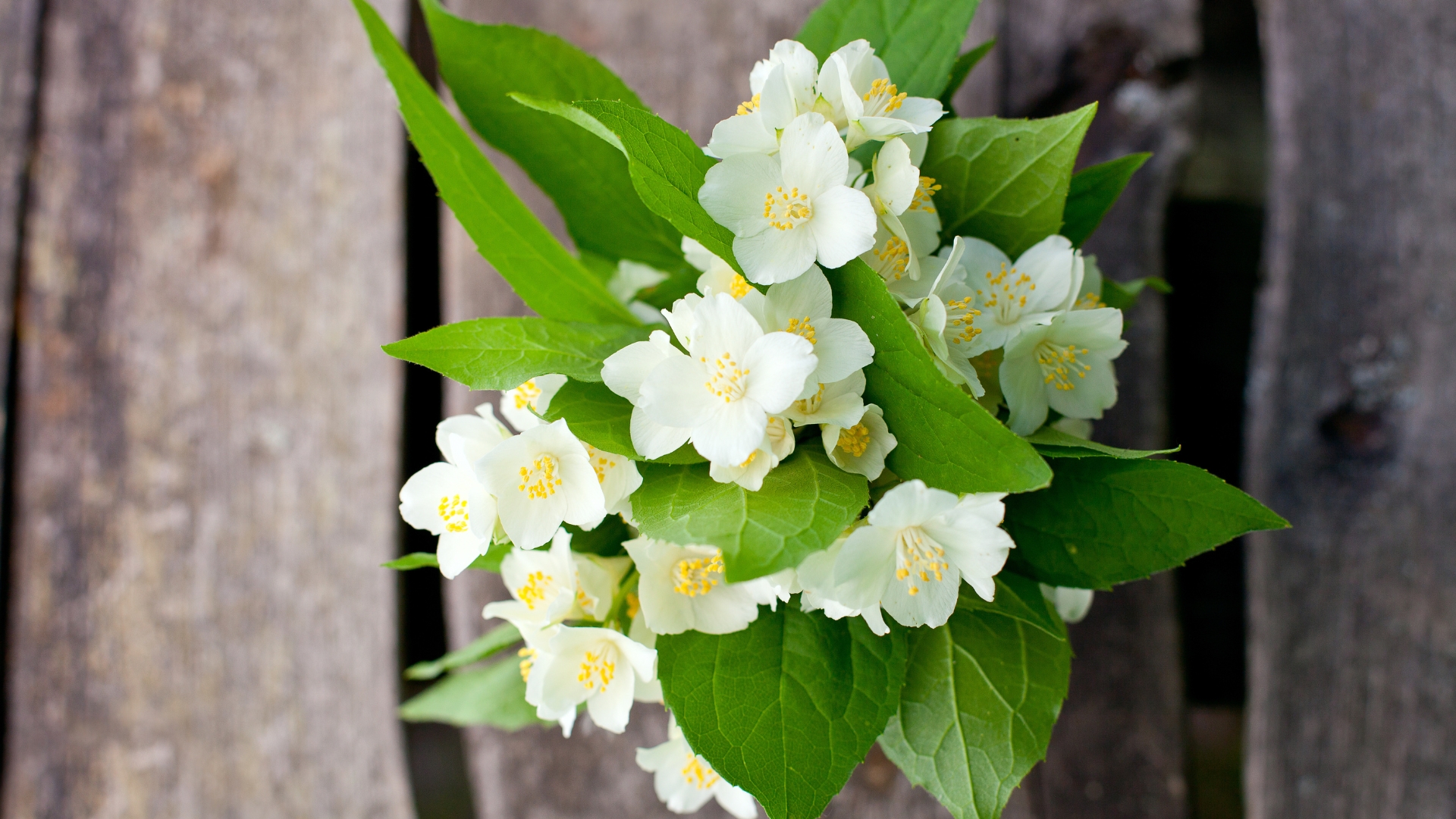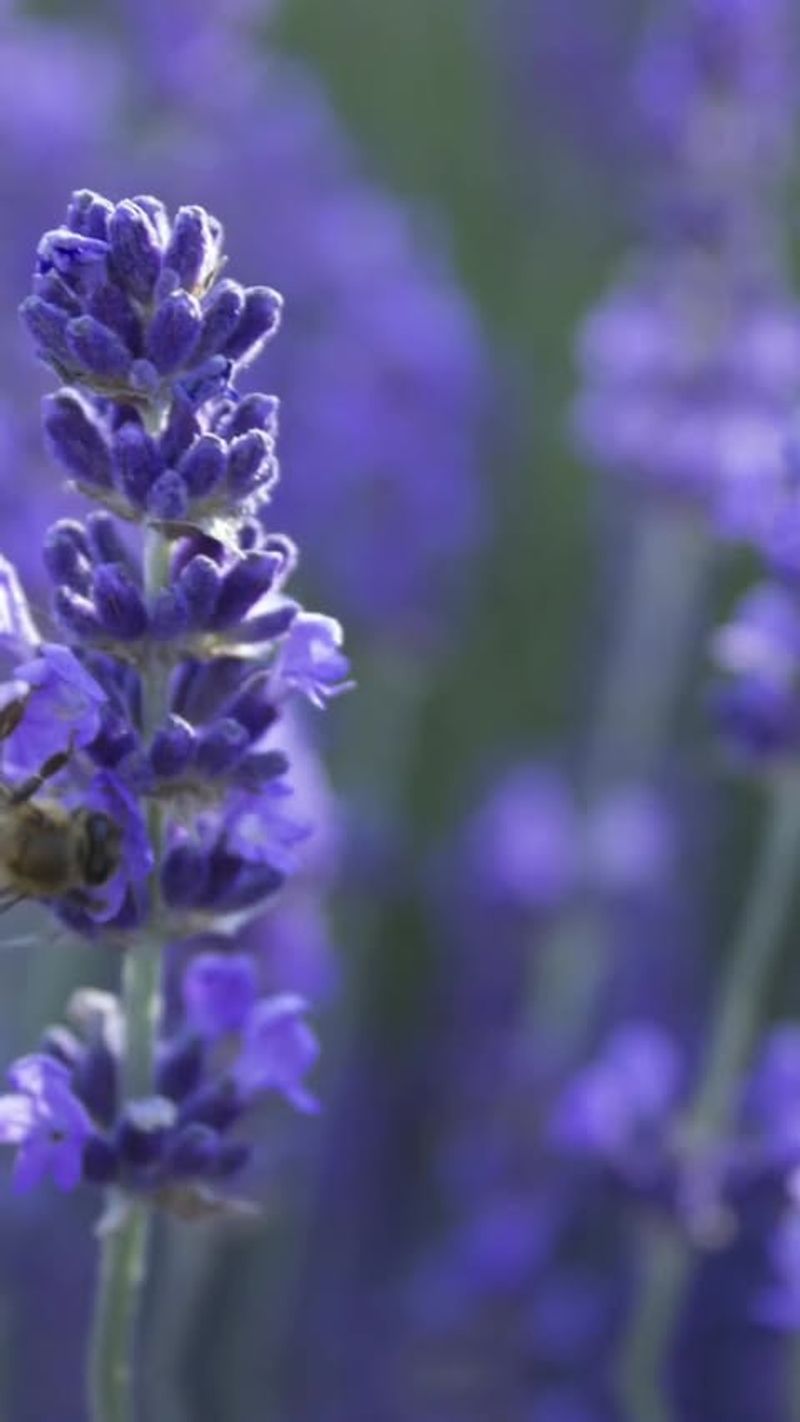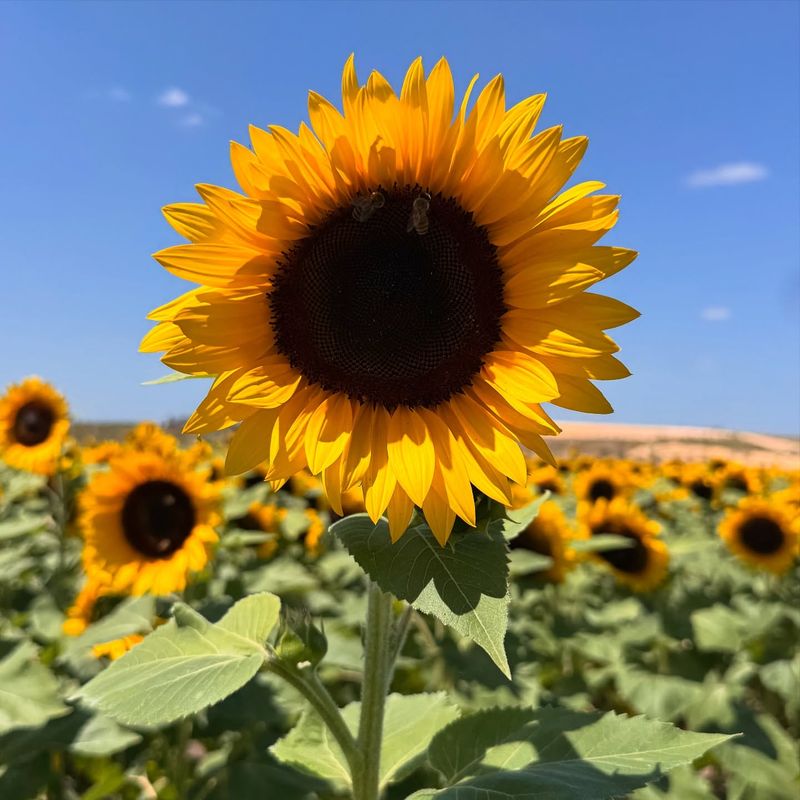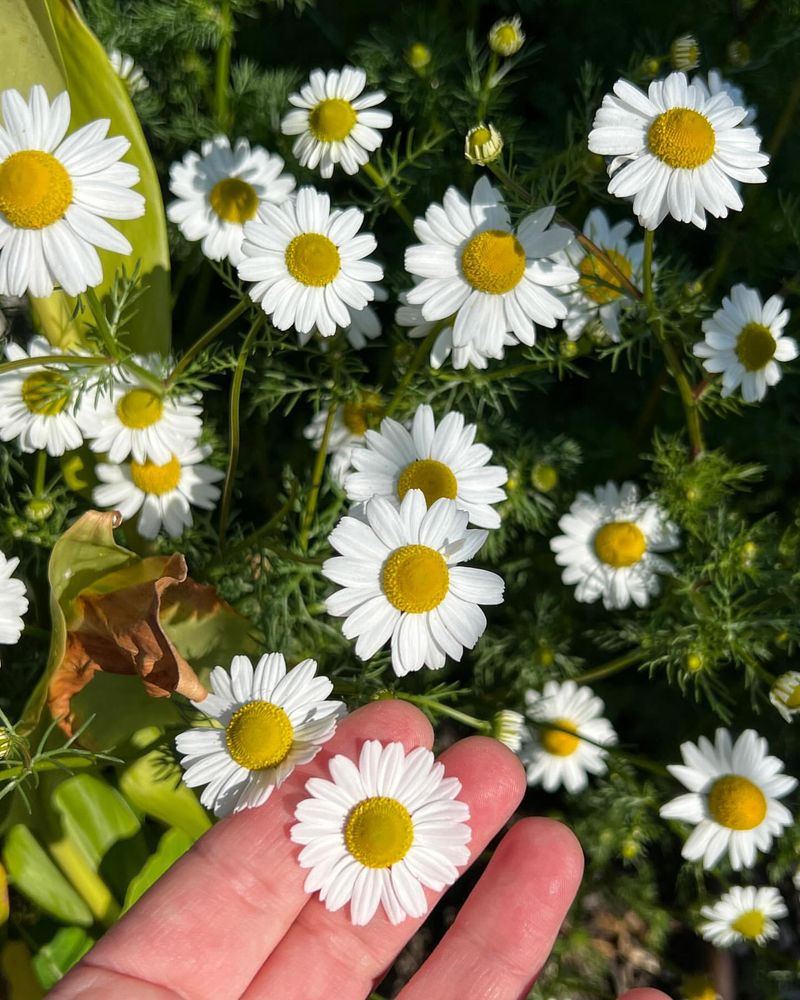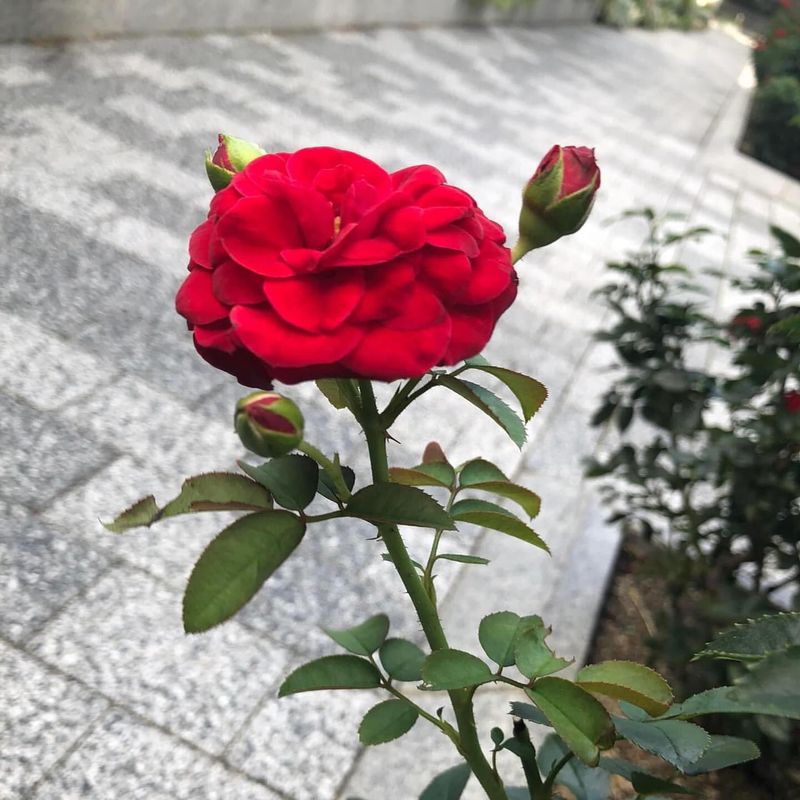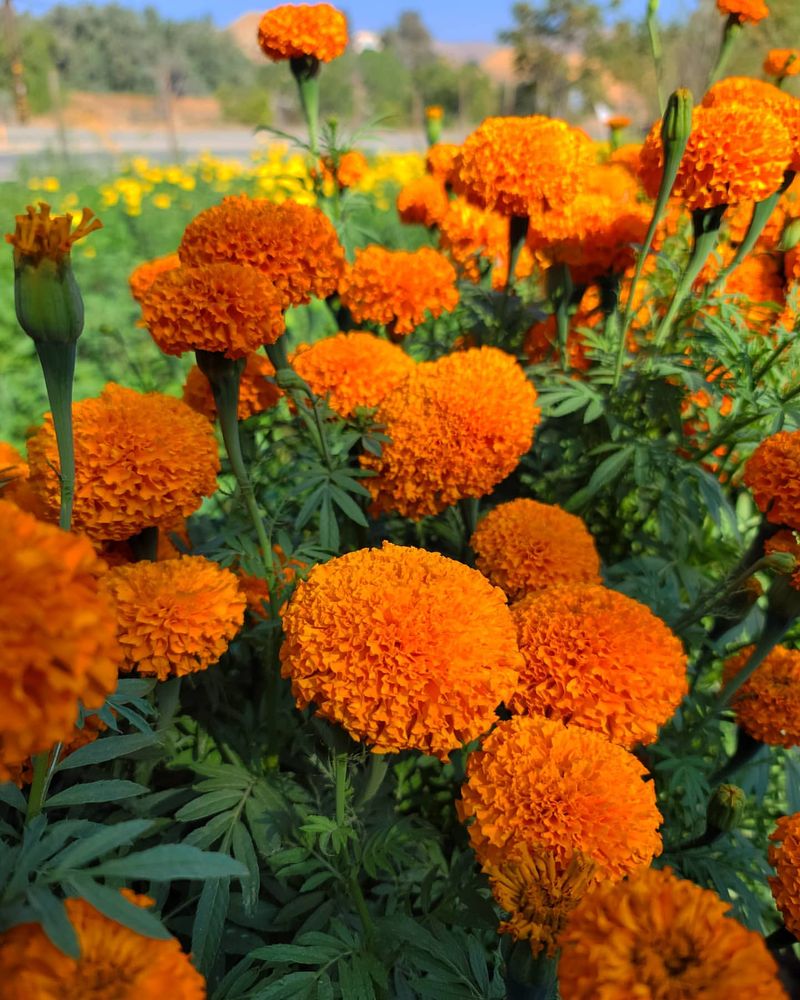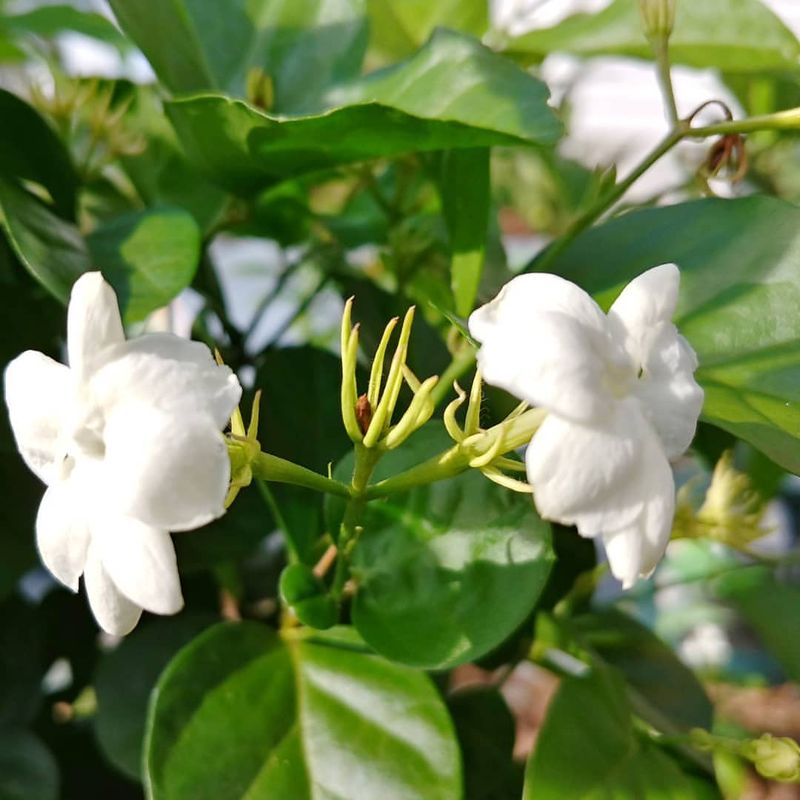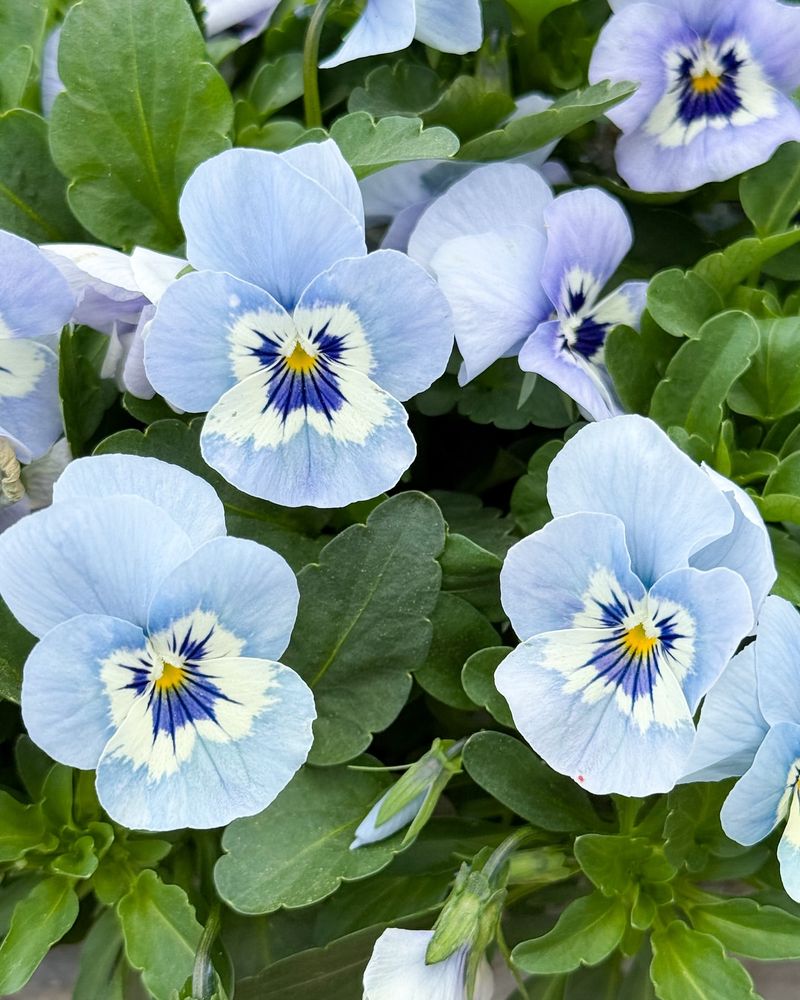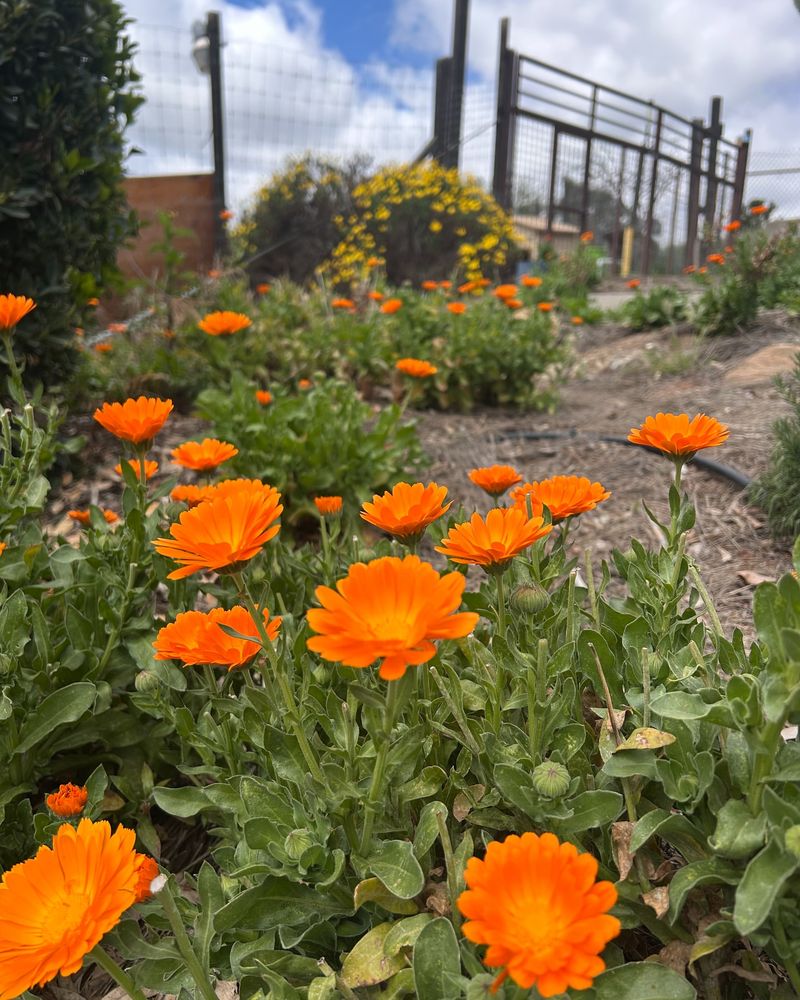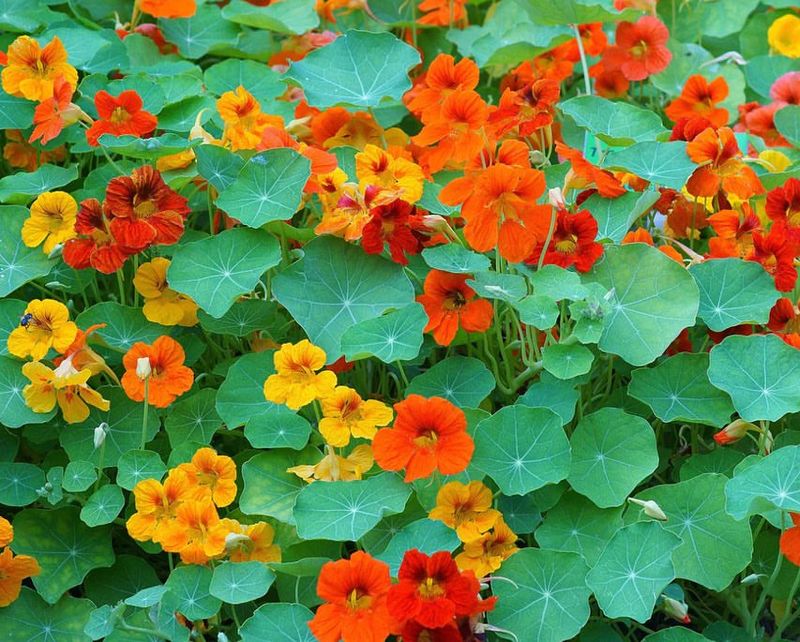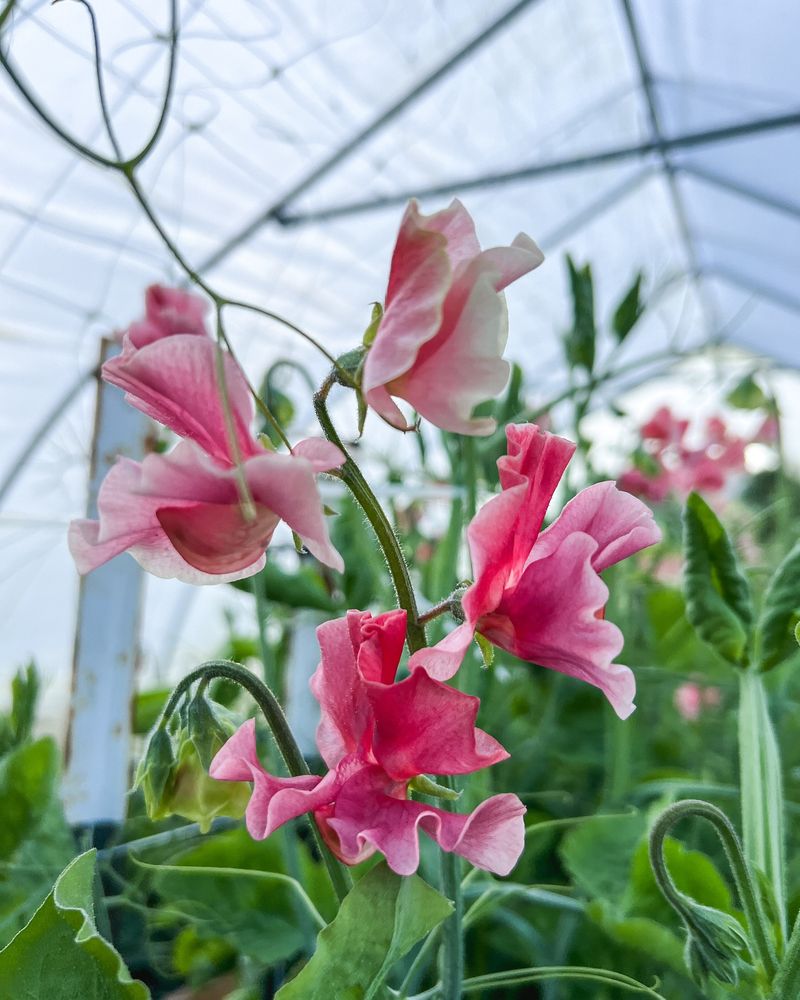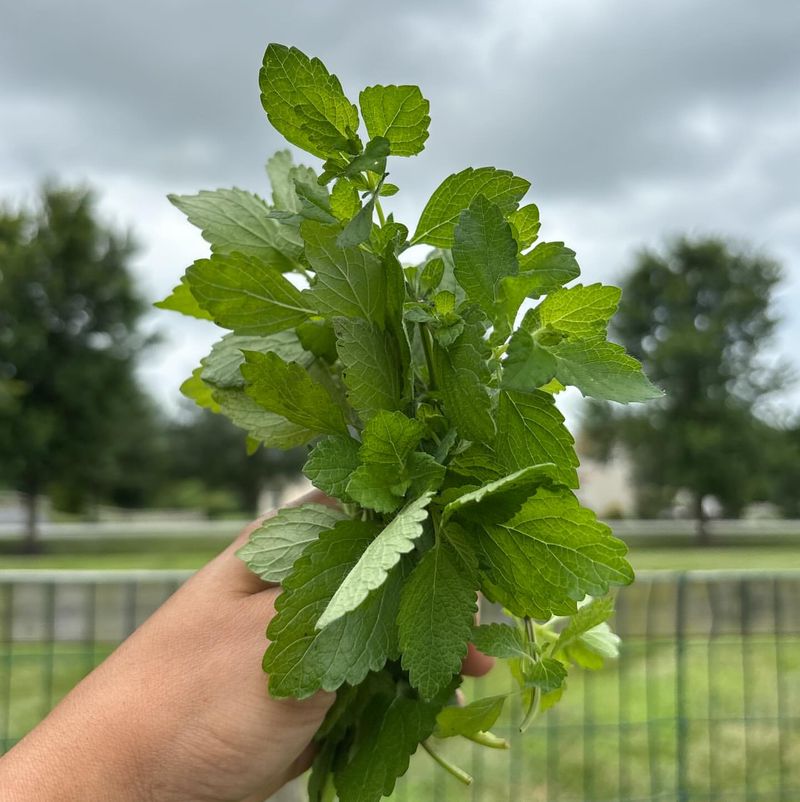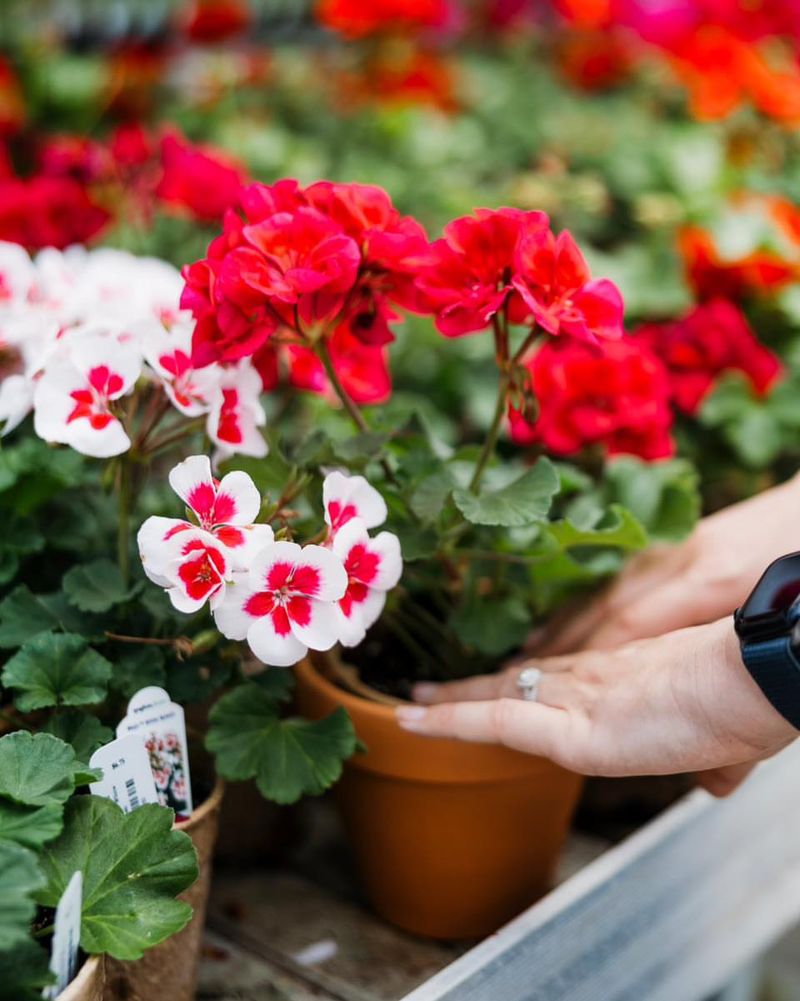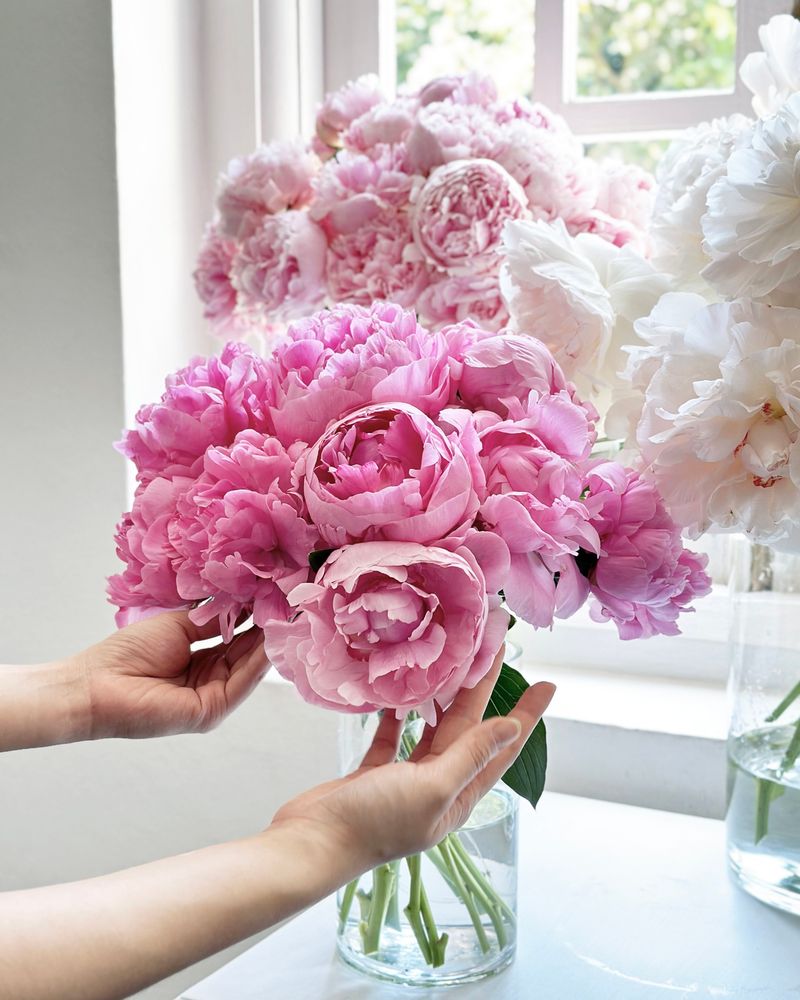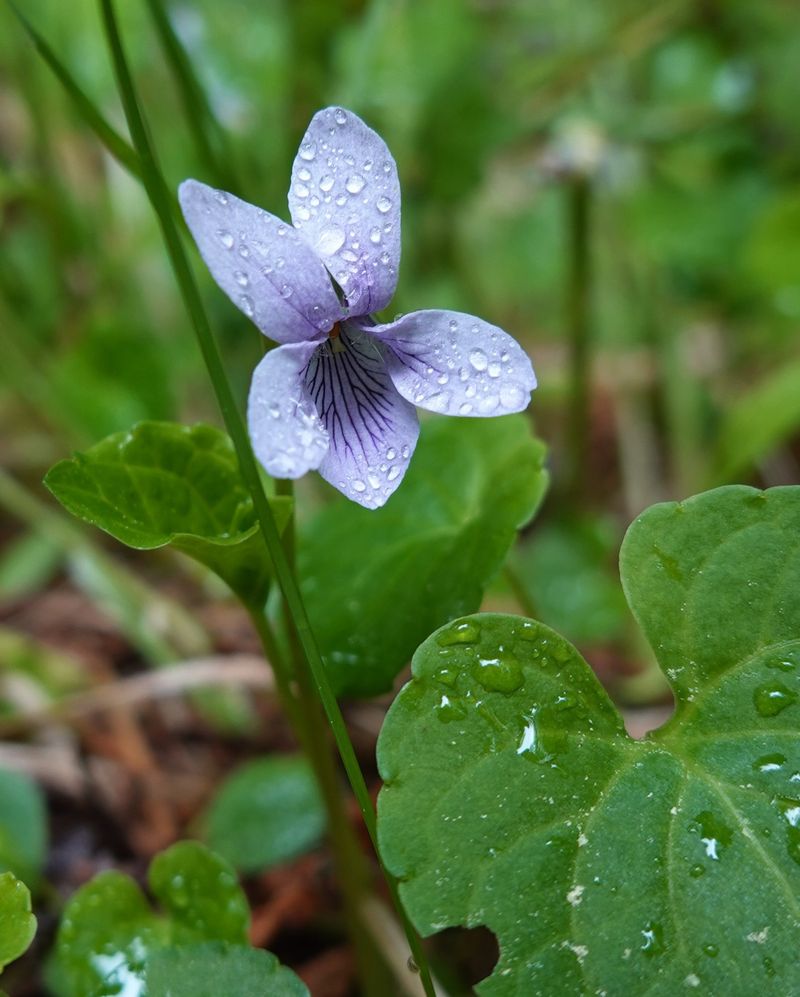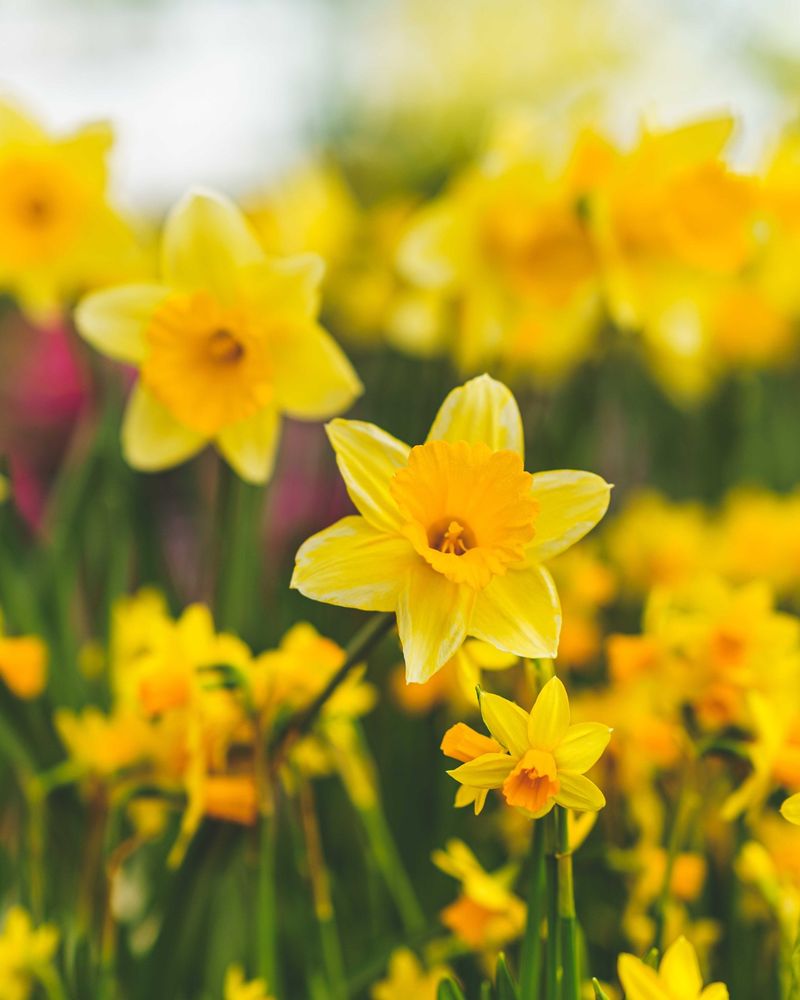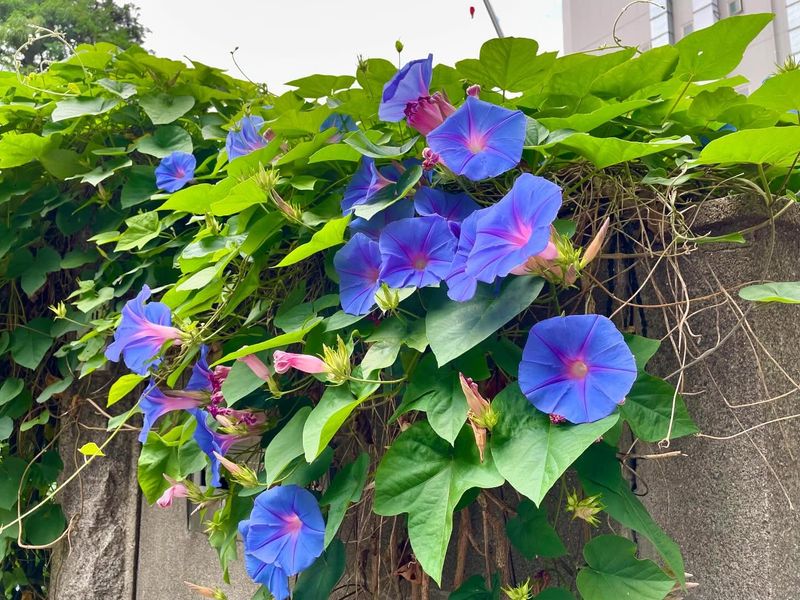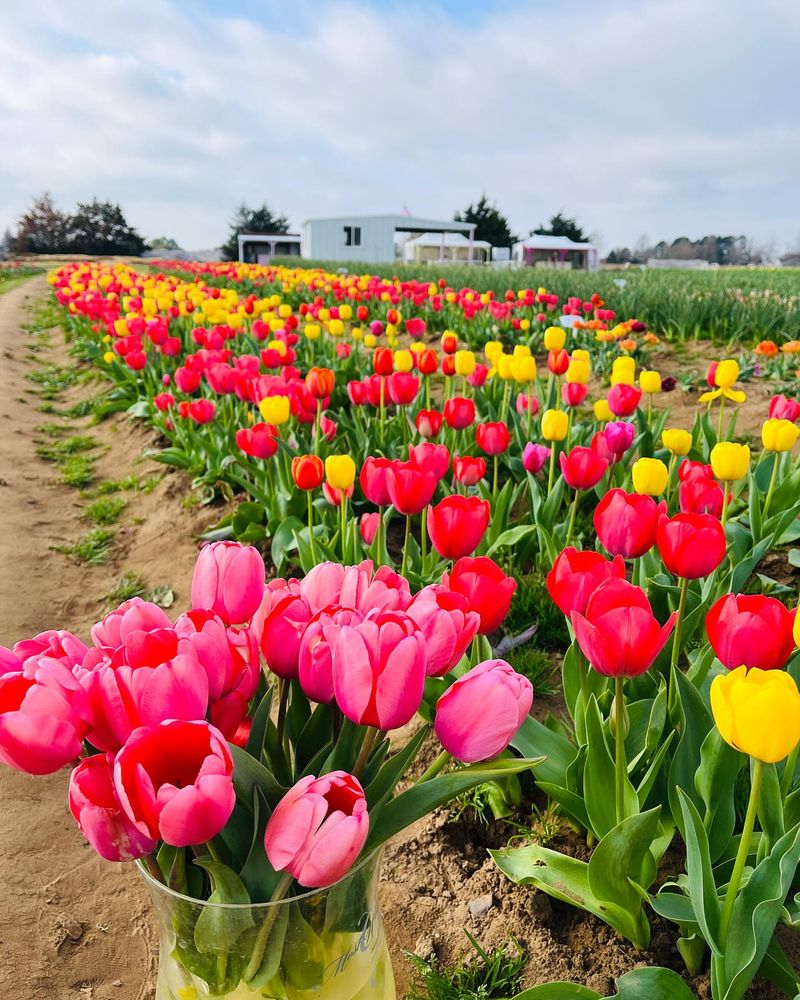There are flowers that don’t just sit there looking pretty—they actually help you feel better. I didn’t believe it at first either, but planting a few changed my whole mood.
Some days, just seeing them pop open is enough to make things feel less heavy. They’re like little garden therapists with petals. If you’re planting for more than looks, these are the ones worth growing.
1. Lavender
The sweet, calming scent of lavender has been used for centuries to promote relaxation and better sleep. Studies show its fragrance can actually lower heart rate and blood pressure, creating an instant feeling of calm.
Growing lavender in your garden or in pots gives you access to this natural stress-reliever year-round. Brush your hands against the plants when feeling anxious, or harvest the flowers to make sachets for your pillow.
2. Sunflowers
Standing tall and bright, sunflowers naturally lift spirits with their cheerful yellow faces that follow the sun throughout the day. Their vibrant color stimulates feelings of happiness and optimism, making them natural mood boosters.
Caring for these giants can be especially rewarding as they grow quickly and dramatically. Watching a sunflower shoot up several inches in just a week provides a tangible sense of accomplishment and connection to the natural world.
3. Chamomile
These daisy-like little flowers aren’t just pretty—they’re powerhouses of calm. Chamomile has been used for centuries as a gentle sedative and anxiety-reducer, helping to quiet racing thoughts and promote better sleep quality.
The simple act of harvesting these blooms to make tea creates a mindful moment in your day. Growing chamomile requires minimal effort, making it perfect for beginners who might feel overwhelmed by complicated gardening projects.
4. Roses
The queen of flowers offers more than just beauty—rose scent has been shown to reduce anxiety and create feelings of well-being. Modern varieties are much easier to grow than their fussy reputation suggests, offering rewards without excessive work.
Tending roses provides a gentle routine that keeps you connected to the present moment. The process of deadheading spent blooms and watching new buds form creates a satisfying cycle of renewal that mirrors emotional healing.
5. Marigolds
Bursting with fiery oranges and yellows, marigolds bring warmth and energy even on the gloomiest days. Their bright colors can stimulate positive emotions and counteract feelings of lethargy that often accompany depression.
These hardy blooms are nearly impossible to kill, making them perfect for building gardening confidence. Their ability to thrive with minimal care offers a gentle reminder that sometimes the strongest growth happens during the most challenging times.
6. Jasmine
The intoxicating fragrance of jasmine does more than please the senses—research shows it can actually reduce anxiety levels and improve sleep quality. Evening-blooming varieties release their scent when you might need that calming effect most.
Training jasmine to climb a trellis or wall creates a beautiful living sculpture that evolves over time. The sweet reward of fragrant blooms after patient care mirrors the gradual improvement that comes with consistent mental health practices.
7. Pansies
With their cheerful “faces,” pansies seem to smile up at you from the garden, offering a friendly presence even during winter months when seasonal depression often hits hardest. Their ability to withstand cold makes them reliable companions through difficult seasons.
Their incredible variety of colors allows for creative expression as you design your garden. Something about their resilience in cool weather reminds us that beauty can persist even when conditions aren’t perfect.
8. Calendula
Often called pot marigold, this sunny flower brings more than brightness to your garden—it’s been used medicinally for centuries to heal both body and spirit. The vibrant orange and yellow blooms keep producing from spring until frost, providing ongoing visual therapy.
Harvesting calendula for teas or salves creates purposeful interaction with your garden. The petals can be dried for winter use, extending the mood-boosting benefits long after growing season ends.
9. Nasturtiums
These easy-growing flowers offer a burst of fiery colors that can ignite joy even on the darkest days. Their peppery edible flowers and leaves add unexpected excitement to salads, creating a direct connection between garden and table.
Nasturtiums thrive in poor soil with little attention, making them perfect for beginners or those with limited energy. Their trailing habit transforms walls and containers into cascades of color, proving that beauty doesn’t have to be complicated.
10. Sweet Peas
The heavenly fragrance of sweet peas can transport you instantly to a place of peace and nostalgia. Their delicate ruffled blooms in pastel shades create a sense of softness that counterbalances the harsh edges of depression.
The ritual of cutting sweet peas for indoor bouquets encourages mindfulness and appreciation of beauty. Since they bloom more with regular harvesting, they teach the valuable lesson that giving can lead to greater abundance.
11. Lemon Balm
This lemon-scented member of the mint family has been used since the Middle Ages to reduce anxiety and promote better sleep. Simply brushing against the leaves releases an uplifting citrus scent that can provide an immediate mood shift.
Lemon balm grows enthusiastically, offering abundant harvests for teas and infusions with minimal effort. Its vigor reminds us that growth is natural and sometimes the smallest actions—like planting a single herb—can yield surprisingly abundant results.
12. Geraniums
The distinct, earthy scent of geranium leaves contains compounds that may help reduce stress hormones in the body. Available in countless colors, these reliable bloomers keep producing flowers with minimal care, offering consistent visual therapy.
Geraniums adapt well to container growing, making them accessible even for apartment dwellers with only a sunny windowsill. Their ability to be propagated easily from cuttings offers the satisfaction of creating new plants—and sharing them with friends.
13. Peonies
The lush, romantic blooms of peonies offer a once-yearly spectacle that teaches the value of anticipation and appreciating beauty in its season. Their incredible fragrance and spectacular appearance create moments of pure joy and distraction from negative thoughts.
Peonies can live for decades, sometimes outliving the gardeners who plant them. This connection to both past and future generations creates a sense of continuity and perspective that can be healing when depression makes time feel distorted.
14. Violets
These humble little flowers carry a powerful message—beauty can exist in small, overlooked places. Their sweet fragrance contains compounds that may actually temporarily desensitize scent receptors, creating a phenomenon where you smell them, then can’t, then can again.
Violets often appear unexpectedly in lawns and gardens, teaching us to notice small joys. Their heart-shaped leaves seem designed to remind us of the connection between nature and emotional healing.
15. Daffodils
As the first major blooms of spring, daffodils signal that darkness—both seasonal and emotional—eventually gives way to light. Their bright yellow color stimulates the production of serotonin, the same neurotransmitter targeted by many antidepressant medications.
Planting daffodil bulbs in fall requires faith that your effort will be rewarded months later. This act of hope mirrors the patience needed in managing depression, where small actions can lead to future breakthroughs.
16. Morning Glories
These climbing flowers open fresh blooms each morning, offering a daily reminder that renewal is always possible. Their rapid growth provides visible progress as they reach for the sun, sometimes growing several inches in a single day.
Training morning glories on a trellis creates a living privacy screen that can transform an ordinary space into a secret garden. Their ability to thrive in poor soil conditions demonstrates resilience—a quality worth cultivating in both gardens and life.
17. Tulips
The simple, perfect form of tulips offers a lesson in finding beauty in clean lines and uncluttered spaces. Their wide range of colors allows you to create a garden palette that resonates with your personal sense of joy and energy.
Watching tulips respond to sunlight—opening during bright days and closing at night—connects you to natural rhythms. Planting bulbs in geometric patterns creates a satisfying order that can counterbalance the chaos often felt during depressive episodes.

